Growing eggplants in the greenhouse - from planting to grooming
The blue fruits of eggplant have long been appreciated by summer residents. But growing a thermophilic crop is difficult, especially in areas with short summers and frequent weather events, so it is best to grow eggplants in a greenhouse. But here there are peculiarities of planting and care.
Content:
- The best varieties of eggplant for a greenhouse
- Preparing seeds, containers and soil for planting
- Terms and rules for planting seeds
- Transplanting seedlings into the greenhouse
- Eggplant care in the greenhouse
- Illumination, humidity and temperature
- Possible growing problems
The best varieties of eggplant for the greenhouse
Eggplant is not easy to cultivate. The vegetable is picky about heat and light. It will not develop when the temperature drops even to 10 degrees above zero. Agrotechnical knowledge is required when growing eggplant in a greenhouse.
You can get a harvest of blue berries, provided that the choice of the variety is correct.
| Variety name | Description | Ripening terms |
| Robin the Hood | The bush reaches a height of 60-90 centimeters. The pear-shaped fruits are covered with a purple skin. Their weight is 300 grams with a diameter of 9 centimeters. The pulp is not bitter, there are no seeds in it. | Fruits reach ripeness 90 days after the germination of the vegetable. The variety requires a garter. |
| faith | The standard stem height is 75 centimeters and above. Dark purple fruits weighing from 100 to 300 grams have a delicate white flesh. | Ripens within 110-120 days. Stability of fruiting, high commercial qualities of fruits are noted. |
| Joker | Clusters with 3-7 fruits on stems up to a meter high. Ellipse-like fruits have a thin, intense lilac skin. The blue ones reach 10-17 centimeters in length, and weigh 130 grams. | An early ripe vegetable is ready to eat in 85-100 days. The plant is resistant to viral infection, high-yielding. |
| Romantic | On bushes 120 centimeters high, fruits of an oval shape, slightly elongated, ripen. Interesting color of berries - mauve. The white pulp has excellent taste. The mass of eggplants is from 180 to 280 grams. | The period of technical ripeness begins 120 days after the first shoots appear. Bushes require garters and shaping. |
| Goliath | The hybrid is famous for its pear-shaped fruits, with dark purple skin and greenish dense flesh. With a length of 27 centimeters, they can weigh from 600 grams to 1 kilogram. | The ripeness of the berries occurs in 110-125 days. In addition to excellent taste and marketability, the vegetable is famous for its resistance to diseases. |
| Airship | A high-yielding variety with a 1-2 meter high bush. Eggplants of a classical shape appear on semi-spreading shoots, the weight of which corresponds to the growth - up to 1 kilogram or more. | The fruits ripen within 4 months. Bushes require a garter. |
For greenhouses, many varieties of vegetables are offered. But it is better to choose tall bushes, which have higher yields and larger fruits. According to the degree of maturity, early and mid-season species are planted in greenhouses.
Preparing seeds, containers and soil for planting
As a heat-loving plant, eggplant cannot mature in cold climates.In unheated greenhouses, he also does not have enough heat and light to get through the growing season successfully. The best way to grow a vegetable is by seedling.
It is necessary to prepare for sowing eggplant in advance. Much depends on the quality of the seed. Therefore:
- check seeds for germination
- treat them with growth stimulants
- germinate in gauze soaked in water
- disinfected in potassium permanganate solution
It is better to plant seeds in boxes 10 centimeters high. If a small amount of seeds is being prepared for sowing, then you can place them in individual cups or pots.
The containers are filled with a substrate consisting of peat, turf and humus, taken in a ratio of 2: 1: 2.
Be sure to mix the mixture with wood ash. For the looseness of the soil, vermiculite or river sand is suitable. The containers are filled with soil, specially disinfected boiling water or a pinkish solution of potassium permanganate. Someone prefers to fry the soil in the oven a week before sowing.
If eggplant seedlings are properly prepared for planting, they prevent the development of diseases in seedlings. And the state of the seedlings affects the further development of the vegetable crop, increases its yield.
You can learn more about growing eggplant seedlings from the video:
Terms and rules for planting seeds
Eggplant seedlings for planting in a greenhouse should be 65-70 days old. Therefore, seeds are planted in the ground in the last decade of February. You can plant it in early March, but this period is suitable for early maturing hybrids.
If the seedlings are in boxes, then they make grooves in the ground, deepening the seeds 1 centimeter inward.
2-3 seeds are placed in an individual container. The soil is slightly compacted, then watering is carried out. The containers must be covered with foil and placed in a warm place to accelerate seed germination. During these days, until vegetable sprouts appear, the seedlings are aired daily. Be sure to monitor the condition of the soil, moisturizing as needed.
The appearance of the first shoots is a signal of an urgent decrease in air temperature from 25 degrees Celsius to 18-20. Now delicate seedlings need more light and careful care:
- In the early days, eggplants need coolness, but then the air temperature should be increased to 25 degrees. At night, it can remain at +16.
- The amount of daylight hours for a vegetable is 12 hours. If there is not enough natural light, phytolamps will come to the rescue.
- Eggplant picking is poorly tolerated, and therefore it is necessary to grow seedlings in individual pots. If you have to do a transplant when the crops are thickened, then this must be done carefully, without damaging the roots of the plant. In this case, after picking on the 10th day, the seedlings are fed with fertilizers containing more phosphorus.
- 2 weeks before transplanting, eggplants are hardened, taking them out for several hours in fresh air. Then the plants will successfully withstand the procedure, quickly take root in a new place.
Transplanting seedlings into the greenhouse
Before planting eggplant seedlings indoors, you need to take care of a new place for the vegetable. Greenhouses are heated by placing hot manure in them. It is worth doing the procedure in advance, 1-2 weeks before placing eggplant seedlings in greenhouses.
To exclude a fungal infection, sprinkle a layer of manure with fluffy lime or wood ash. The soil in the greenhouse consists equally of turf and humus. The addition of river sand is allowed.
The transplant will be successful if the preparation for it has been carried out carefully.
It is necessary to transfer the seedlings to the greenhouse in the first decade of May. The dates are shifted by a week for the northern regions. The distance between the shoots of a vegetable depends on its type. Tall plants require 2-3 plants per square meter. You cannot plant undersized species nearby, otherwise they will not have enough light.
The distance between the holes is kept within 35 centimeters. The rows are separated from each other by 60 centimeters. The seedlings are deepened by 5-8 centimeters.In order for the seedlings to adapt faster, the temperature in the greenhouse is 18-20 degrees Celsius.
Eggplant care in the greenhouse
Eggplant needs competent care:
- Plants are watered abundantly, but taking into account the condition of the soil. The retention of moisture in the room is facilitated by mulching the garden.
- Eggplant needs fertilization at all stages of growth. Better to use liquid solutions. Every 10 days, fertilizing is carried out first with organic matter, then with mineral complexes. To do this, use a mullein, diluted in a 1: 5 ratio. For each bucket of solution add 10 grams of ammonium nitrate, 50 grams of superphosphate and 15 grams of potassium chloride. When the fruits begin to ripen, it is necessary to increase the amount of mineral fertilizers. Biohumus and Bioton preparations are taken from the complex mixtures.
- Improves the growth of eggplants with Agricola forte, Ideal.
- Tall vegetable varieties are grown, forming 2-3 stems.
- If more than 5 shoots appear on the bushes, then pinch the top of the plant.
- Eggplants are tied up, reaching a height of more than 1 meter. Pegs attached to each bush are used for the procedure. Many people arrange a trellis for all tall varieties of vegetables.
With proper care in the greenhouse, eggplants ripen faster.
Illumination, humidity and temperature
The activity of the root system of a vegetable crop in the greenhouse decreases when the parameters of humidity, illumination and air temperature in the greenhouse change:
- An abundance of light is one of the conditions for the proper development of eggplant. It is important to choose a place for the plants in the greenhouse so that natural light falls on the vegetable bushes. Therefore, it is impossible to plant a number of tall ones with undersized varieties. In cloudy weather, add artificial light to the greenhouse.
- Humidity must also be monitored constantly. A high percentage of it indoors will lead to the activation of pathogenic fungi. It is enough for the humidity to be at 75 percent.
- Temperature control in the greenhouse is mandatory. Its sharp fluctuations are undesirable and destructive for eggplants. Fruits ripen better at a temperature of 25-28 degrees. Raising it above 30 will lead to shedding of flowers and ovaries.
Possible growing problems
Difficulties in growing eggplants in a greenhouse arise due to the wrong approach, inappropriate development conditions:
- Temperature changes and high soil and air humidity lead to the appearance of gray rot. A fungal infection can be prevented by regularly ventilating the room, organizing heating when cold weather sets in.
- Lack of lighting will result in mosaic stains on the leaves of the vegetable. The virus will have to be fought with chemicals.
- Late blight often affects nightshade culture. To prevent pathology, prophylactic treatment with Fitosporin is used.
- In rooms that are poorly ventilated, eggplant pests such as aphids and whiteflies appear. The parasitic insects are harvested by hand or sprayed with insecticides. Prepare sticky traps for pests.
- The curling of leaves on the bushes indicates that the light regime in the greenhouse is violated, to which the eggplants are sensitive. If the leaves curl into a tube only during the day, it means that the soil in the room is excessively saline. This is due to insufficient watering. Rapid evaporation of moisture contributes to an increase in the amount of potassium salts in the soil.
- An excess of mineral fertilizers also affects the condition of the eggplants. If there is an excess of potassium or phosphorus, it is necessary to wash them out with water.
- An insufficient potassium content in the soil will affect the leaves, which will take the shape of a boat. In this case, the fruits will be shriveled.
Problems when growing eggplants in a greenhouse will not appear if the rules of vegetable agricultural technology are followed.
More information about growing eggplant in a greenhouse can be found in the video:





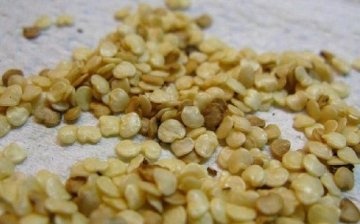

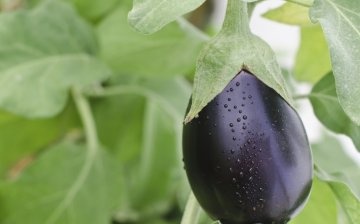
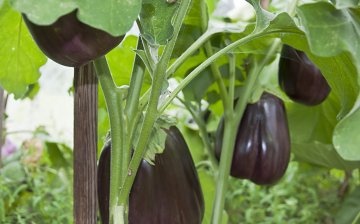








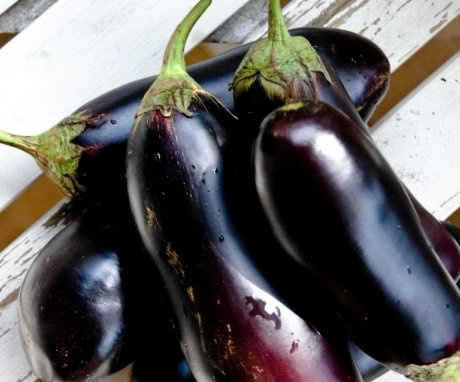
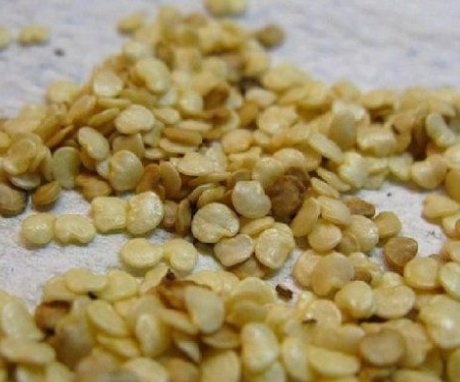

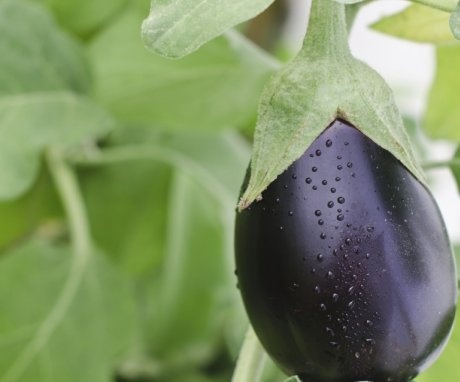
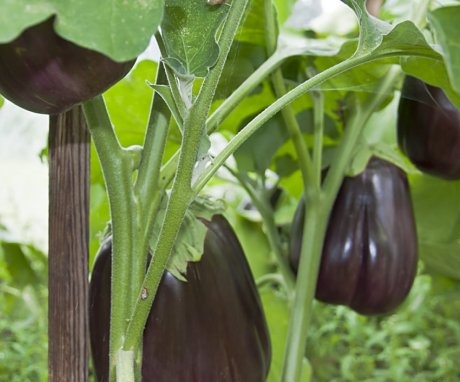

My eggplants grow well, but if the summer is cold, then there is a possibility that the harvest will not ripen, so a greenhouse is certainly an excellent solution to this problem. I will definitely try it now next year.
Eggplants, even without a greenhouse, are generally very picky plants, it is not so easy to grow them, they love abundant watering, in some way even capricious, so it will not be easy to grow them.